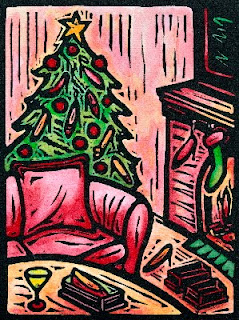
What a great year it's been for silent movies! First, Laurie King plunged her formidable series heroine, Mary Russell, and spouse Sherlock Holmes, into the midst of a silent film shoot, ca. 1924, in her new novel, "The Pirate King." Next, Martin Scorsese introduced a whole new generation of movie fans to the antic oeuvre of French silent film pioneer George Melies in Hugo.
Now, along comes Michel Hazanavicius with The Artist, which recreates the look, texture, and sensibility of a vintage black-and-white silent film with irresistible fidelity.
Just look at stars Jean Dujardin and Berenice Bejo in the film's scrumptious Art Deco finale!
One of the things I love most about The Artist is the way Dujardin replicates the broad, gestural style of silent film acting without resorting to spoof or parody. The generous opulence of his performance never seems corny; it's completely ingrained in the character of the silent movie star he plays, and perfectly suited to the era when popular stars like Douglas Fairbanks (Sr) were acting out big stories to thrilled audiences all over the world.

Here's the real Doug Fairbanks in one of his signature roles, The Thief of Bagdhad (1923), showing off the numero uno attribute in his arsenal of charm—his killer grin. (Dujardn is no slouch in this department, either.) But while he could have coasted through stardom on his smile alone, with Fairbanks, you got the whole package: he usually wrote his own scenarios, stage-managed the onscreen action, and, of course, did all his own stunts.
That's why you really can't appreciate Fairbanks until you see him in action. Here's a brief clip from The Mark of Zorro (1920), which gives you an idea of the joie de vivre and sheer physical prowess that made Doug Fairbanks the most popular man in Hollywood—possibly the world—during the 1920s. Do NOT try this at home, kids!
Everybody remembers Gene Kelly splashing around in those puddles in Singin' In the Rain (decked out in that stylish '50s fedora), so it's sometimes hard to remember that that gloriously Technicolor film was also set in the same '20s era as The Artist, during the transition from silent films to talkies. In Rain, Kelly stars as a Fairbanks-like matinee idol in the midst of shooting a silent swashbuckling costume drama, The Dueling Cavalier, when the advent of sound films suddenly renders that mimetic production style hopelessly passe.

In The Artist, Dujardin's character faces the same dilemma; he releases his silent picture anyway and fails. In Rain, Kelly's character decides not only to incorporate the novelty of sound effects into the film (that's Kelly, above, in a telling moment, in the reconstituted film-within-the-film), he turns it into a musical, re-titled The Dancing Cavalier, and it's a huge success.
Things don't turn out so peachy for Dujardin's character (at least, not at first). I loved the dream sequence in The Artist where he's overwhelmed by fear of the clattering chaos sound will bring to films. (And this decades before Jerry "Boom Boom" Bruckheimer, Michael Bey, and Dolby Digital mega-sound.)

Btw, in all the well-deserved kudos being lobbed at The Artist for it's innovation and originality, most critics suggest this is the first attempted silent film since the general switch to sound, about 1929 (or at least 1936, when Charlie Chaplin, one of the last hold-outs, made his last silent film, Modern Times). Not so. Mel Brooks made the comedy Silent Movie in 1976, entirely without spoken dialogue (except for one, single, well-chosen syllable), but it was shot in color and told a contemporary story of a modern producer trying to make a silent film.
In 1989, writer/director/star Charles Lane made Sidewalk Stories, a sentimental Chaplin-esque urban comedy with a message, shot in black-and-white, without dialogue—which was considered radically experimental for its time.
The movies lost a lot of their storytelling power when they learned to talk. Wouldn't it be great if silent was considered a viable option at the movies again? Not all the time, but once in awhile, the way fearless modern directors still occasionally make a terrific film in black-and-white. But, wait, that's another blog.






























